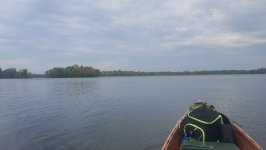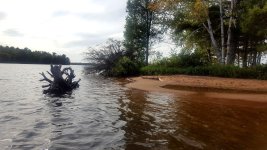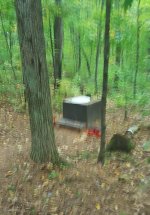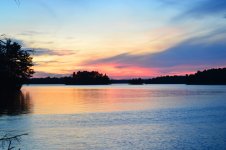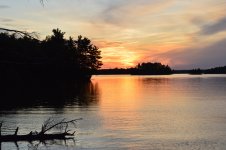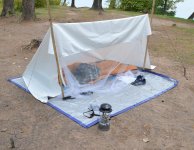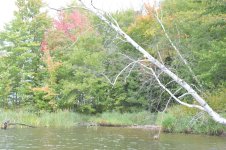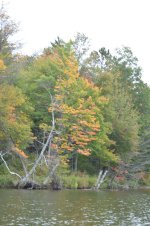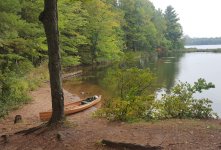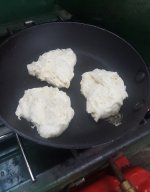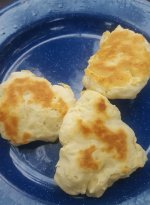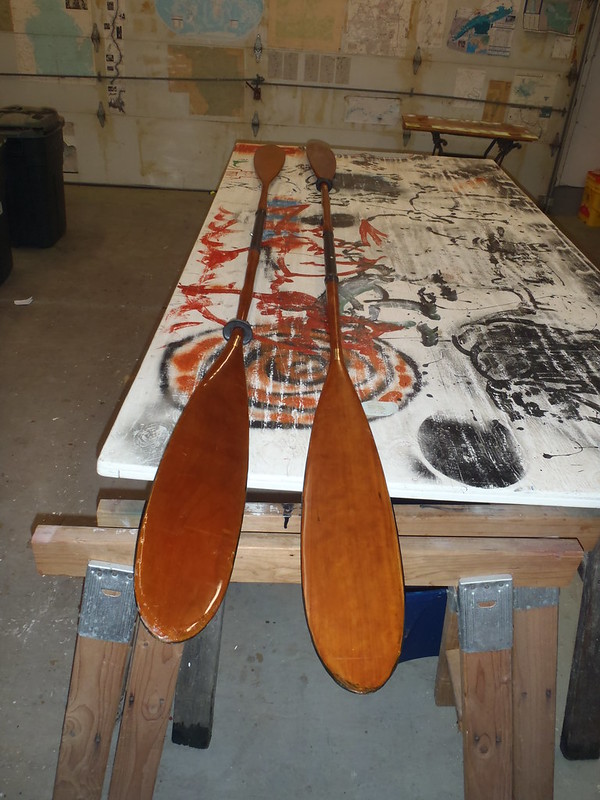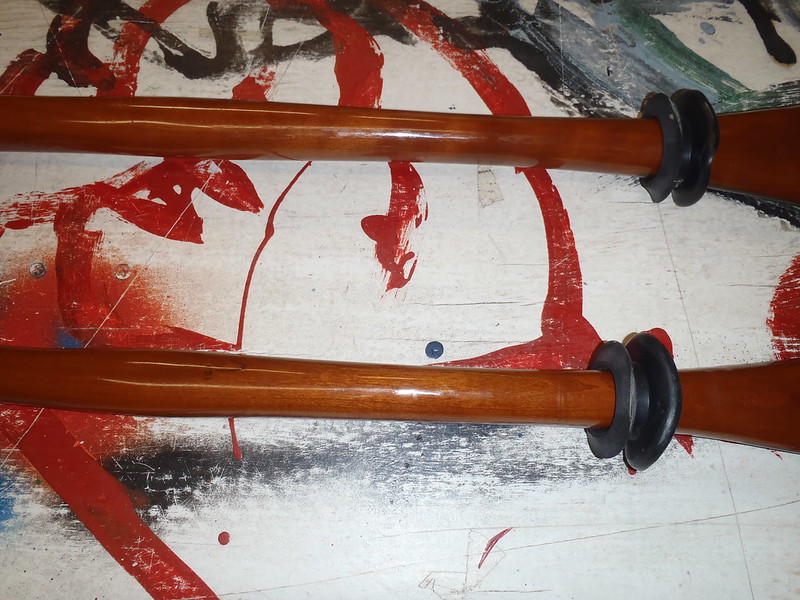(Note that this trip was late September, 2019. I've been without in-home broadband for a while, so did not get around to posting)
Looking for a place to get away for a day or two, fish or test out gear? Lake Chippewa Flowage might be just what you are looking for.
I spent three days/two nights (Including drive time) doing a test run of my camping/tripping gear. This is my Story.
Map is available here:
 dnr.wisconsin.gov
dnr.wisconsin.gov
Got in on a Monday afternoon, and I put in at the CC South boat landing, the most directly accessible for where I'm coming from, about 3:30 PM. (Also, the only one with potable water). Wind is from the SSE, probably 10-12 MPH, with gusts. (This becomes relevant when explaining some gaps in my travels and photography.)
I noodled around a little, testing the balance of my gear. (First time with a full camping load) The Flowage is about 15,300 acres of fairly deep channels and basins broken up by around 200 islands. The whole thing sprawls across an area about 5X10 miles, but it's so broken up that you cannot see half that distance in most directions.
I mostly head west, just because I'm still getting used to all the tripping gear, and that wind... I check out Cedar Tops island, as the campsite there is supposed to be accessible (Checking for friends). It's occupied, so I don't get too close. End up cutting the evening short, as I don't want to set up in the dark, and make my way to the Little Bannana Campsite.
If some of you more experienced trippers are looking at my distances and shaking your heads, please keep in mind that I'm an office worker that does not get to paddle nearly as much as he'd like. I'd rather underestimate my stamina than overestimate.
I enjoy some camp-cooked food, and a truly lovely sunset, and figure that I'll do more exploring in the morning.
Did I forget to mention that it was a little breezy? You'd think that this would die down for the night. Nope. It picked up. I'd borrowed some tent stakes for my (experimental) tarp. That's where most of the rant in This Post came from. Had to re-rig parts of that tarp during the night. Got maybe 2 hours of sleep.
Looking for a place to get away for a day or two, fish or test out gear? Lake Chippewa Flowage might be just what you are looking for.
I spent three days/two nights (Including drive time) doing a test run of my camping/tripping gear. This is my Story.
Map is available here:
Maps | Chippewa Flowage | Wisconsin DNR
Got in on a Monday afternoon, and I put in at the CC South boat landing, the most directly accessible for where I'm coming from, about 3:30 PM. (Also, the only one with potable water). Wind is from the SSE, probably 10-12 MPH, with gusts. (This becomes relevant when explaining some gaps in my travels and photography.)
I noodled around a little, testing the balance of my gear. (First time with a full camping load) The Flowage is about 15,300 acres of fairly deep channels and basins broken up by around 200 islands. The whole thing sprawls across an area about 5X10 miles, but it's so broken up that you cannot see half that distance in most directions.
I mostly head west, just because I'm still getting used to all the tripping gear, and that wind... I check out Cedar Tops island, as the campsite there is supposed to be accessible (Checking for friends). It's occupied, so I don't get too close. End up cutting the evening short, as I don't want to set up in the dark, and make my way to the Little Bannana Campsite.
If some of you more experienced trippers are looking at my distances and shaking your heads, please keep in mind that I'm an office worker that does not get to paddle nearly as much as he'd like. I'd rather underestimate my stamina than overestimate.
I enjoy some camp-cooked food, and a truly lovely sunset, and figure that I'll do more exploring in the morning.
Did I forget to mention that it was a little breezy? You'd think that this would die down for the night. Nope. It picked up. I'd borrowed some tent stakes for my (experimental) tarp. That's where most of the rant in This Post came from. Had to re-rig parts of that tarp during the night. Got maybe 2 hours of sleep.

